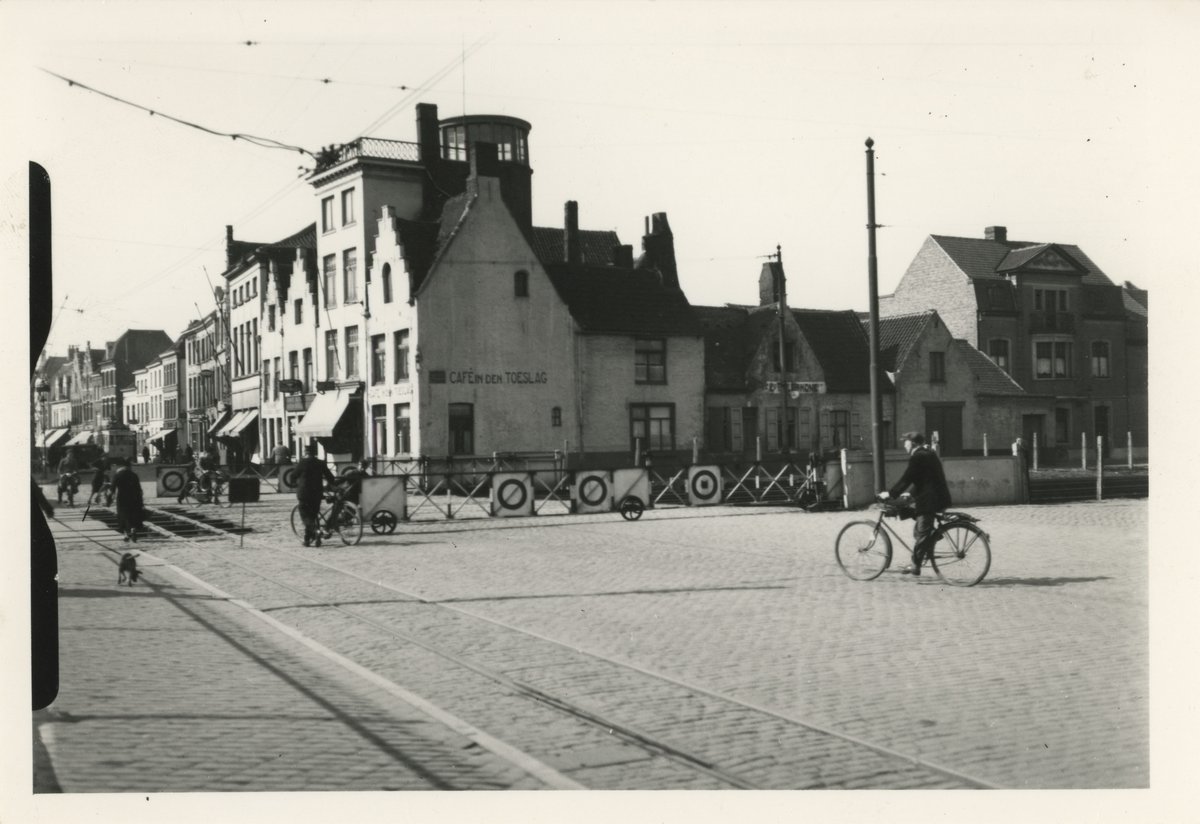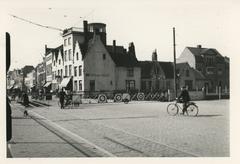
Hoefijzerlaan Bruges, Belgium: Visiting Hours, Tickets, and Historical Sites Guide
Date: 15/06/2025
Introduction
Hoefijzerlaan is a vibrant avenue situated just outside the medieval heart of Bruges, Belgium. As a key urban artery, it bridges the city’s deep-rooted historical legacy with its dynamic, modern-day life. Developed during Bruges’ 19th-century expansion, Hoefijzerlaan—meaning “Horseshoe Avenue”—serves as an accessible starting point for visitors arriving via the main railway station and offers immediate proximity to the UNESCO World Heritage-listed city center. The avenue is renowned for its eclectic late 19th-century architecture, broad tree-lined sidewalks, and seamless integration with green spaces, setting the stage for a unique Bruges experience (SpottingHistory; UNESCO; Visit Bruges).
Historical Background and Urban Context
From Medieval Roots to Urban Expansion
Bruges’ origins trace back to the 9th century, flourishing as a medieval commercial powerhouse shaped by city walls and intricate canal networks. The original 11th-century walls, though now gone, still influence the city’s street layout and preserved gates. As Bruges’ economic prominence waned post-Middle Ages, much of its medieval character was preserved. However, the 18th and especially the 19th centuries saw renewed urban growth. Hoefijzerlaan emerged as a central artery of this westward expansion, reflecting the changing needs of a growing city (SpottingHistory).
19th-Century Urban Planning
The avenue’s development coincided with infrastructural advancements such as the Coupure canal (1751–1755), the creation of ’t Zand square, and the arrival of the railway station in 1838. Hoefijzerlaan’s design—with its broad, tree-lined sidewalks—contrasts the narrow medieval streets and symbolizes Bruges’ transition into a modern urban center. Its horseshoe-like curve connects the historic core to newer districts, embodying the city’s adaptive growth and urban foresight (SpottingHistory).
Architectural Character and Heritage
Hoefijzerlaan is lined with buildings that capture the spirit of late 19th-century Bruges. Neo-Gothic and eclectic styles dominate, with features such as pointed arches, ornate brickwork, and decorative motifs. Notably, the Golden Tree Hotel, set in an 1864 mansion, exemplifies the avenue’s blend of heritage and contemporary hospitality. The street’s architecture contributes to the overall UNESCO World Heritage fabric of Bruges, recognized for exceptional preservation (UNESCO; National Geographic).
Integration with Historic Bruges and Urban Mobility
Hoefijzerlaan is strategically located near ’t Zand, a major square and transportation hub, offering easy access to the railway station and city center. The avenue’s wide sidewalks, medians, and dedicated bike lanes accommodate pedestrians, cyclists, and vehicles, making it an essential component of Bruges’ urban mobility network. Its infrastructure supports sustainable exploration and connects visitors efficiently to the city’s top attractions (Visit Bruges Accessibility).
Cultural Significance and Community Life
Hoefijzerlaan pulses with local energy. Its proximity to the Concertgebouw (a major concert hall) and ’t Zand square means it regularly hosts cultural events, markets, and festivals (Visit Bruges Events). The avenue is home to a variety of shops, cafés, bakeries, and boutique hotels, offering an authentic taste of Flemish daily life. Unlike the more tourist-dense center, Hoefijzerlaan maintains a relaxed and genuine atmosphere.
Contemporary Urban Development and Sustainability
Bruges continues to invest in sustainable urban development, with nearby projects like the Kaaidistrict transforming former industrial areas into vibrant, climate-resilient neighborhoods. Hoefijzerlaan acts as a gateway to these innovative districts, highlighting Bruges’ balance of heritage conservation and forward-looking urban planning (Re-Value Cities).
Visitor Information: Practical Tips
Accessibility
- Year-Round Access: Hoefijzerlaan is a public avenue open 24/7, with no entrance fee.
- Wheelchair-Friendly: Wide, well-maintained sidewalks and ramps ensure accessibility for all visitors.
- Transport: Reachable within a 10-minute walk from the main railway station; well-served by city buses, taxis, and cycling paths.
Visiting Hours and Tickets
- General Access: No tickets or specific hours for the avenue itself.
- Nearby Attractions: Venues like the Concertgebouw, museums, and the Belfry have their own ticketing policies and hours (typically 9:30 AM–5:00 PM). Check official sites for details (Visit Bruges).
Accommodation & Amenities
- Lodging: Options range from boutique hotels (Golden Tree Hotel, Hotel Portinari) to hostels (Snuffel Hostel). Advance booking is recommended during peak seasons.
- Dining: Enjoy Belgian specialties at local cafés, brasseries, and bakeries. Le Pain Quotidien and Concertgebouwcafé are notable choices.
- Shopping: Supermarkets, pharmacies, and specialty stores line the avenue, catering to daily needs and longer stays.
Parks and Green Spaces
Hoefijzerlaan connects to Bruges’ ring of parks and the remnants of the old ramparts—ideal for walking, cycling, and relaxation. The green belt contributes to the city’s sustainability and offers scenic escapes from the urban bustle (polisnetwork.eu).
Events & Local Experiences
- Markets & Festivals: ’t Zand hosts Saturday markets and seasonal events. The Concertgebouw offers a diverse cultural program.
- Tours: Guided walking and cycling tours are available, often departing from or near Hoefijzerlaan (Visit Bruges Events).
Nearby Historical Sites
- Markt Square: Bruges’ vibrant heart, featuring the iconic Belfry (Get Lost in Wanderlust).
- Burg Square: Home to the Basilica of the Holy Blood and City Hall.
- Beguinage (Begijnhof): UNESCO-listed serene enclave of whitewashed houses (Grand Hotel Normandy).
- Groeningemuseum: Renowned for its collection of Flemish art (Lonely Planet).
- Canal Districts: Picturesque canals and bridges, best explored by boat (Nomadic Matt).
Frequently Asked Questions (FAQ)
Q: Is Hoefijzerlaan accessible year-round?
A: Yes, it is a public street open 24/7 with no restrictions.
Q: Do I need tickets to visit Hoefijzerlaan?
A: No, but tickets are required for nearby museums, the Concertgebouw, and other attractions.
Q: How far is Hoefijzerlaan from Bruges railway station?
A: Less than a 10-minute walk; also accessible by bus, taxi, or bike.
Q: Is the area wheelchair accessible?
A: Yes, with wide sidewalks, step-free entrances, and accessible public transport stops (Visit Bruges Accessibility).
Q: Are guided tours available?
A: Yes, several companies offer walking and cycling tours that include or depart near Hoefijzerlaan.
Q: What’s the best time to visit?
A: April–October for pleasant weather and lively outdoor events; winter for festive markets and decorations.
Visuals and Maps
Alt text suggestions: “Hoefijzerlaan Bruges tree-lined street,” “Golden Tree Hotel Bruges facade,” “View of Belfry Tower from Hoefijzerlaan.”
Related Articles
Key Takeaways and Recommendations
Hoefijzerlaan is a living tapestry of Bruges’ layered history and vibrant present. Its Neo-Gothic facades, leafy promenades, and authentic local commerce make it an ideal base for exploring the city’s world-renowned heritage. The avenue’s accessibility, sustainable development focus, and cultural vibrancy ensure a memorable and inclusive experience for all visitors.
Plan your visit today:
- Check event calendars for local happenings
- Use guided tours for deeper insights
- Explore the green belt for relaxation
For personalized travel assistance, download the Audiala app and follow us for updates.
Sources and Further Reading
- Historic Centre of Brugge | SpottingHistory
- UNESCO World Heritage: Bruges
- National Geographic: Bruges UNESCO Guide
- Lonely Planet: Top Things to Do in Bruges
- Re-Value Cities: Bruges
- Visit Bruges Accessibility
- Polis Network: Historic Urban Landscape Management Plan











































































